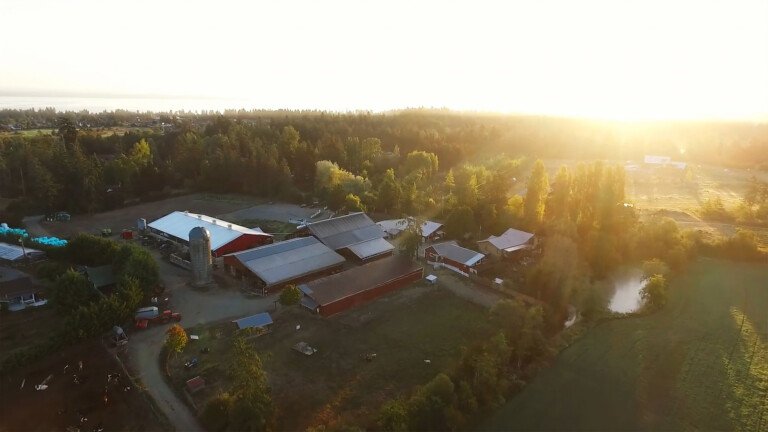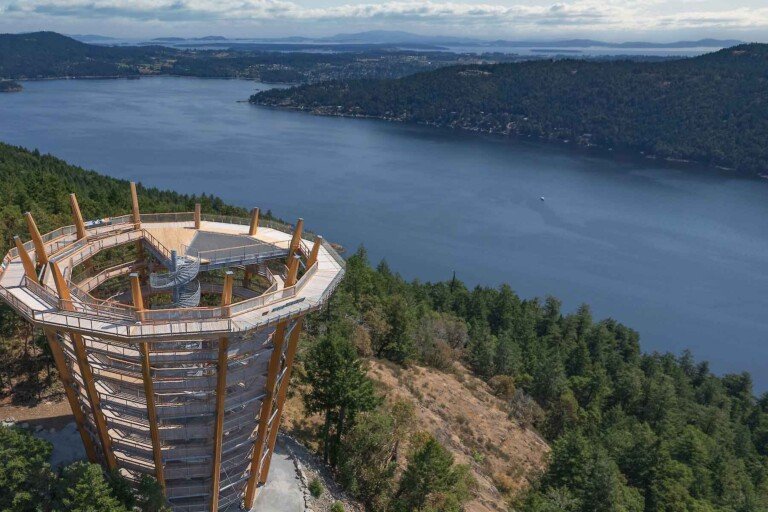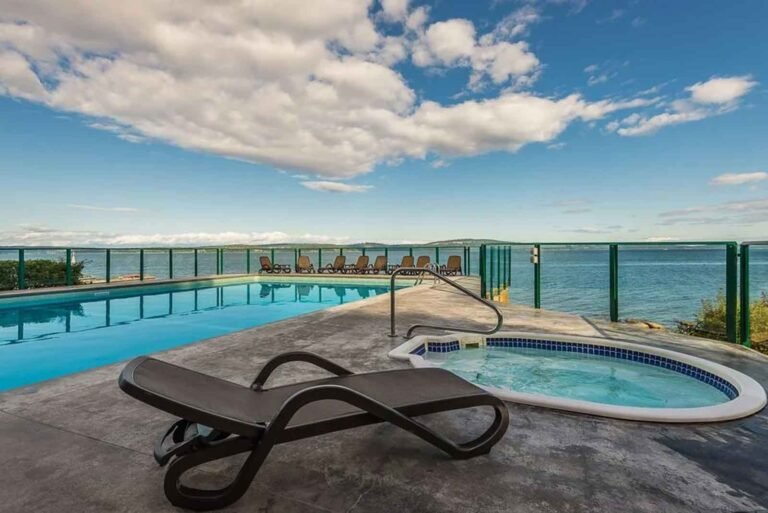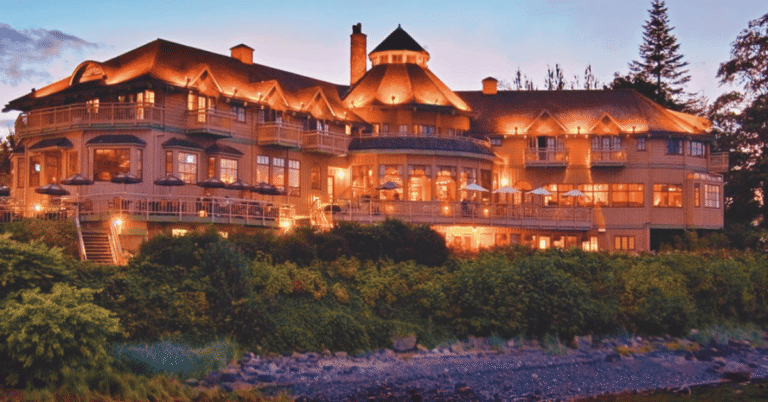At the confluence of the Thompson and Nicola Rivers, northeast of Lytton, is the small community of Spences Bridge, an important Nlaka’pamux centre.
The area around Spences Bridge has a long and ancient history, with a Native Heritage spanning thousands of years. Europeans first came during the Cariboo Gold rush of the 1850s, when the town was known as Cook’s Ferry after the ferry that was used to connect the two sides of the Thompson River.
In 1863, Thomas Spence, the famous road builder, finished the Cariboo Highway by replacing the ferry with a wooden toll bridge across the rushing Thompson River. The community was renamed when that first bridge was built in 1864. After the gold rush, the town became a farming and railroad community, which it remains to this day. “Add water to this sun-drenched land and you can grow anything” the saying goes, proven by the many orchards, fruit stands and ranches near Spences Bridge.
Spences Bridge no longer has the bridge across the Thompson River that once gave the community its name. Removal of the bridge was completed in March 2015 after the Ministry of Transportation deemed the bridge to be a safety hazard and closed it permanently after 82 years in service. Disassembly of the bridge now separates the communities living on the north and south sides of the river. Residents can still travel across the river via the Thompson River Bridge, which is part of Highway 1, but it is a half-hour walk from the old bridge.
Famous today for its excellent steelhead fishing, the area around Spences Bridge attracts dedicated anglers from around the world between September and December to catch and release these fabulous sports fish. Aside from fishing, other outdoor adventures include a trail ride operation, river rafting, hiking and sightseeing.
Tourism and agriculture are the main contributors to the economy of Spences Bridge, supported by forestry and service industries. Agriculture includes self-sufficient ranchers that grow corn and hay, and fruit farmers that sell their fruit at roadside fruit stands.
Population: 25
Location: Spences Bridge is located on Trans-Canada Highway 1 on the western shore of the Thompson River, 38 miles (60 km) south of Cache Creek and approximately 39 miles (50 km) north of Lytton.
Several heritage sites add to the enduring appeal of Spences Bridge, including the oldest active hotel in British Columbia, and the Widow Smith Gravesite.
Take a pleasant trip out to the spectacular Murray Creek Falls on Murray Creek, to the west of Spences Bridge, which features a gorge and waterfall.
The site of the Last Spike of the Canadian Northern Pacific Railway is located on Highway 1, approximately 20 kilometres north of Spences Bridge on the east bank of the Thompson River. The rail line is now part of the Canadian National Railways system.
Pan for Gold in the Thompson River and the nearby Fraser River, following in the footsteps of the Cariboo Gold Rush prospectors.
Goldpan Provincial Park: Right on the Thompson River, Goldpan Provincial Park is the park of choice for anglers. The Thompson Nation has fished here for centuries, and still does. It’s great for steelhead during the busiest time, mid-October to December. If you’re river rafting, you might overnight here, as Goldpan Provincial Park is used as a rest stop for many commercial river-rafting companies. Swimming is fun here, too.
Fishing: There are few fishing runs as legendary – or as threatened – as the steelhead run on the Thompson River and one of its main tributaries, the Nicola River. Steelhead are an oceangoing species of trout (or salmon, depending on whom you consult) famous for their size, speed, stamina, and tremendous strength. In order to surmount obstacles in the Fraser Canyon before entering the Thompson near Lytton, steelhead must possess all these characteristics. In fall, anglers head for two places in particular: Goldpan Provincial Park, located on the Thompson River, and Spences Bridge. Anglers can readily access both the Thompson and the Nicola Rivers from Spences Bridge. For information on steelhead fishing regulations, contact the Fish and Wildlife Conservation Officer in Kamloops, 250-374-9117. For an insight into the Thompson River steelhead run, as well as portraits of 10 other British Columbia rivers, consult The Run of the River by Mark Hume.
Wildlife: Large herds of bighorn sheep are visible in and around the community throughout the year. A patient wildlife observer in the area surrounding Spences Bridge may see elk, bighorn sheep, deer, coyote, black bears, cougar, bobcat, lynx, bald eagles, ospreys and many other wildlife species. British Columbia is one of the richest wildlife viewing areas in Canada.
Whitewater Rafting: Located on or near two world-class whitewater rivers, the legendary Thompson and Fraser Rivers, the only decision to be made in Spences Bridge is whether to power raft or paddle raft. The less strenuous but wetter power rafting requires that you cling to a wildly bucking powered raft while negotiating the big rapids, whereas paddle rafting offers the sense of accomplishment provided by teamwork and hard paddling. There are eighteen major rapids in the stretch of river between Spences Bridge and Lytton, which is graded from 1 to 5. The Nicola River also tempts rafters and kayakers.
Camping: There are 5 campgrounds with 100 campsites and 25 RV campsites available around Spences Bridge. Camping in the Thompson and Nicola Valley.
Farm Guide: Travellers looking for a down-to-earth experience can find a list of resources and activities featured in the Kamloops Farm Fresh Guide. The guide showcases the diversity of life in the Thompson Nicola region, which ranges from wine tasting to guided family horseback rides on a working cattle ranch. Visitors can use the guide (available from Tourism Kamloops) to locate area farmer’s markets and fall fairs, discover fresh-picked fruit and vegetables, farm-raised meat and eggs, and value-added products like honey and jellies.
Circle Tours: See the best of the area on Okanagan and Kootenay Rockies Circle Tour. Travel the sunny interior of British Columbia, north through the Okanagan to Sicamous, following Highway 1 into the mountains of the BC Rockies. From Golden, head south through the Columbia Valley to Creston, and west through the Southern Okanagan, starting and ending your sun-drenched voyage in Osoyoos, the place where two lakes come together. Circle Tours in British Columbia.






